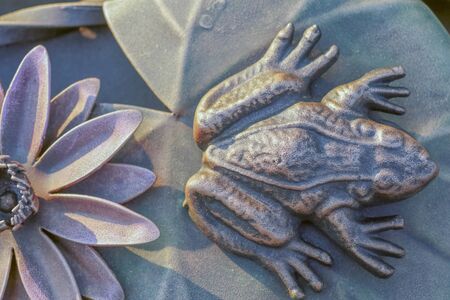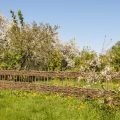Creating a Welcoming Habitat
If you’d like to welcome frogs, newts, and toads into your garden pond, it all begins with creating the right sort of home for them. British amphibians thrive in gardens that feel safe and natural, so think about how you can make your outdoor space a sanctuary. Start by offering plenty of natural shelter—piles of stones or logs, leaf litter beneath shrubs, and dense planting around the pond’s edge all provide cool hiding spots where these creatures can rest undisturbed. Shade is also important: overhanging plants or taller grasses not only protect amphibians from harsh sunlight but also help maintain the cool, moist conditions they love.
When choosing plants, opt for a variety native to the UK, such as water forget-me-nots, marsh marigolds, and flag irises. These not only look beautiful but provide vital cover both in and out of the water. Remember, amphibians are shy and sensitive; a peaceful corner with minimal disturbance will quickly become their favourite haunt. With some thoughtful planting and a little patience, your pond can soon become a bustling haven for Britain’s charming amphibians—just waiting to be discovered by curious little explorers.
Choosing Pond Plants for Wildlife
If you’re hoping to attract frogs, newts, and toads to your garden pond, choosing the right plants is a wonderful first step. Inspired by the British countryside, native pond and marginal plants not only beautify your pond but also create vital habitats for amphibians. Let’s explore which plants are best for welcoming these fascinating creatures, and how you can plant with purpose as a family.
Why Native Plants Matter
Native plants are naturally adapted to our local climate and provide food, shelter, and breeding spaces for wildlife. By selecting plants familiar to British ponds and wetlands, you’re offering frogs, newts, and toads a little piece of home—a safe spot to hide from predators, lay eggs, or simply bask in the sun.
Pond Plant Types That Support Amphibians
| Plant Type | Examples | Wildlife Benefits |
|---|---|---|
| Submerged Oxygenators | Ceratophyllum demersum (Hornwort), Potamogeton crispus (Curly Pondweed) | Provide oxygen; hiding spots for tadpoles and newt larvae |
| Floating Plants | Lemna minor (Common Duckweed), Hydrocharis morsus-ranae (Frogbit) | Shelter on water surface; shade keeps water cool in summer |
| Marginal Plants | Iris pseudacorus (Yellow Flag Iris), Caltha palustris (Marsh Marigold) | Borders for climbing in/out; egg-laying sites; nectar for pollinators |
| Bog Plants | Mentha aquatica (Water Mint), Myosotis scorpioides (Water Forget-me-not) | Damp habitat around pond edge; attract insects for amphibians to eat |
Family Tip: Planting Together
Involve children by letting them gently place floating plants on the water or press seeds into the mud at the pond’s edge. Take a nature walk together to spot these species in local parks or nature reserves—see who can find the most different types!
By thoughtfully planting a variety of native species, your garden pond becomes a miniature haven echoing the best of our British wild spaces. Watch as frogs leap among the reeds, newts glide through submerged forests, and toads burrow beneath lush leaves—nature’s magic, right outside your door.

3. Ensuring Safe Access to Water
Creating a welcoming garden pond for frogs, newts, and toads isn’t just about water—it’s also about how easily these little visitors, and perhaps your own children, can come and go. Amphibians need gentle slopes and easy exits to ensure they don’t become trapped or stressed. Likewise, a pond designed with care offers young explorers a safe spot to observe nature up close.
Designing Gentle Slopes
When shaping the pond’s edge, aim for shallow gradients rather than steep drops. A gradual incline makes it simple for frogs and newts to hop in and out, while also reducing the risk of slips for curious youngsters. You might use turf, flat stones, or even logs as a natural ramp—these materials not only blend into the landscape but also offer extra hiding spots for wildlife.
Providing Multiple Exits
Amphibians are surprisingly intrepid wanderers! By including several exits around your pond, you allow them to move freely between water and land. Flat rocks or piles of pebbles can serve as stepping stones for both tiny webbed feet and little wellies. This helps prevent accidental stranding and invites more creatures to make your garden their home.
Safety First for All Explorers
If you have children eager to explore, think about installing a sturdy mesh cover or low fencing when unsupervised play is likely. Teach your little ones to tread gently—both for their own safety and for the protection of delicate pond life. Exploring together becomes a lesson in respect for nature, fostering curiosity while keeping everyone safe.
Plant Inspiration: Iris and Marsh Marigold
Consider planting native waterside flora like yellow iris or marsh marigold near these entry points. Not only do they provide shade and shelter for amphibians, but their bright blooms create a delightful invitation—encouraging both wildlife and families to linger by the water’s edge.
4. Providing Food and Shelter
To make your garden pond a true haven for frogs, newts, and toads, it’s important to understand what these charming amphibians need in terms of food and shelter. Much like us, they seek comfort and nourishment close to home! Amphibians thrive where there are plenty of tasty morsels, as well as safe spots to hide from predators and the unpredictable British weather.
What Do Amphibians Like to Eat?
Frogs, newts, and toads are natural pest controllers, munching on a variety of garden bugs. Here’s a quick look at their favourite snacks:
| Amphibian | Favourite Foods |
|---|---|
| Frogs | Slugs, snails, flies, beetles |
| Newts | Small insects, worms, aquatic larvae |
| Toads | Woodlice, ants, spiders, caterpillars |
If you avoid using pesticides and encourage a healthy insect population by planting native flowers and letting wild corners flourish, you’ll soon see more amphibian visitors hopping around your pond.
Shelter: Where Do They Like to Hide?
Amphibians love nooks and crannies where they can rest or hibernate undisturbed. You don’t need anything fancy—nature provides the best inspiration! Try these simple ideas:
- Pile up leaves in a quiet corner for a cosy blanket.
- Stack logs or branches near the pond edge for damp hideaways.
- Create bug hotels with stones and twigs to attract tasty insects and provide snug shelters.
Top Tip: Let Nature Lead the Way!
A slightly untidy garden is an amphibian’s dream. Resist the urge to clear every leaf or trim back all your plants; those wild spaces are perfect for wildlife. By providing food-rich habitats and plenty of places to hide, you’re inviting frogs, newts, and toads to feel right at home—just as families gather together in the cosiest corners of their house on a rainy day.
5. Keeping Your Pond Chemical-Free
When you invite frogs, newts, and toads into your garden pond, you’re not just welcoming new friends — you’re creating a tiny sanctuary that echoes the British love for protecting our native wildlife. One of the best ways to help these amphibians flourish is by keeping your pond free from chemicals. Avoiding pesticides, herbicides, and artificial fertilisers is more than just good housekeeping; it’s about letting nature do what she does best.
Chemicals commonly used in gardens can be harmful to amphibians, even in small amounts. Frogs, newts, and toads have sensitive skin that absorbs substances from the water, making them especially vulnerable. Pesticides can disrupt their delicate life cycles, and fertilisers can encourage algal blooms that rob the water of oxygen. By choosing natural methods of pest control, like encouraging ladybirds or using mulch to keep weeds at bay, you’re doing your bit for biodiversity right outside your back door.
This chemical-free approach doesn’t just benefit your pond dwellers; it also supports birds, hedgehogs, and pollinators who share your garden. It’s a wonderful opportunity to involve children as well—why not go on a bug hunt together or make nettle tea fertiliser as a family experiment? These little acts help pass on the tradition of caring for our countryside and its creatures.
Remember, a truly wild pond teems with life because it’s been given the freedom to find its own balance. By holding back on chemicals and trusting in nature’s wisdom, you’ll soon see frogspawn in springtime and the gentle ripple of newt tails as dusk falls—a living lesson in patience and protection that every member of the family can enjoy.
6. Getting Kids Involved in Nature
Introducing children to the world of garden ponds is a wonderful way to nurture a love for nature right at home. Watching frogs leap, newts glide, and toads hop can spark endless curiosity and awe. Here are some family-friendly ways to observe, care for, and record your amphibian visitors—bringing screen-free joy and meaningful stewardship to your outdoor space.
Make Amphibian Spotting a Family Adventure
Equip little ones with magnifying glasses or bug viewers and head out together at dusk, when frogs and newts are most active. Remind everyone to move slowly and keep quiet to avoid startling these shy guests. Challenge each other to see who can spot the most different species or count how many tadpoles you find wriggling in the shallows.
Create a Wildlife Journal
Encourage children to keep a special pond diary, noting down dates, weather conditions, and which creatures they see. Drawing pictures or writing short stories about their observations helps develop literacy skills while strengthening their connection to local wildlife. Over time, your family’s journal becomes a treasured record of the changing seasons in your own back garden.
Take on Mini Conservation Tasks Together
Get hands-on by working as a team to keep the pond healthy for its amphibian residents. Children can help gently remove excess duckweed, top up water levels during dry spells (using rainwater if possible), or plant native wildflowers at the pond edge. These simple tasks teach responsibility while reinforcing the importance of caring for living things.
Connect with Local Wildlife Groups
Many UK communities have wildlife trusts or pondwatch schemes where families can join guided activities or contribute sightings. Participating in these projects not only supports conservation efforts but also helps children feel part of something bigger than their own back garden.
Embrace Screen-Free Fun
Swap screens for wellies and let imaginations run wild outdoors! Whether it’s making up frog-themed games, building mini shelters for toads from twigs and leaves, or listening quietly for croaks on a summer evening, every moment spent together in nature is a seed planted for future stewardship. By welcoming amphibians into your pond and into your hearts, you’ll be nurturing young minds—and making magical memories along the way.


